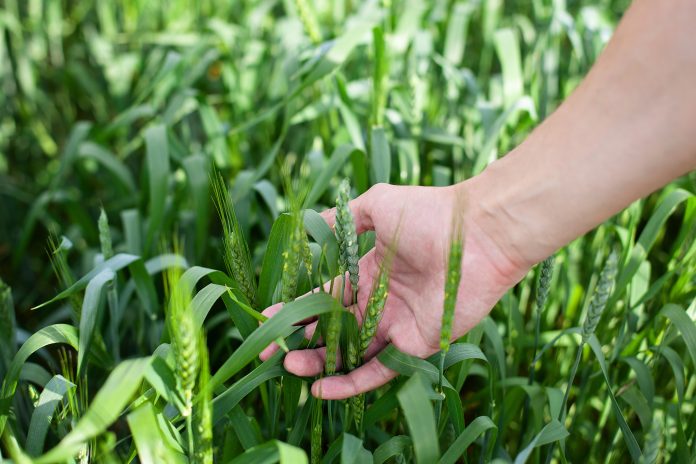APHIS, part of the USDA, is using a risk-based approach to protect U.S. agriculture from potentially devastating plant pests and diseases, as we discover here
The Animal & Plant Health Inspection Service (APHIS) is an agency of the United States Department of Agriculture (USDA). It has a wide-ranging mission to protect and promote U.S. agricultural health, regulate genetically engineered organisms, administer the Animal Welfare Act and carry out wildlife damage management activities.
A key element of the agency’s work is the ongoing protection of animal and plant resources from pests and disease.
The potential damage of major agricultural pests, such as the Mediterranean fruit fly or Asian long-horned beetle, going unchecked could run into the billions of dollars in lost production annually.
Similarly, if diseases like Foot and Mouth or highly pathogenic avian influenza became established in the United States, it could lead to foreign trade restrictions and devastating losses for producers.
The Plant Protection Act 2000 was introduced to prevent the importation, exportation and spread of pests and to provide for their control and eradication, as well as to provide for the certification of plants.
The act consolidated responsibilities previously split between several other laws, such as the Plant Quarantine Act, the Federal Plant Pest Act and the Federal Noxious Weed Act.
APHIS takes an aggressive approach to pest control and in recent years has focused on improving a risk-based approach to simplify processes for dealing with low-risk pests and pathogens while allowing greater resources to be focused on high-risk categories.
In 2016, the USDA’s Plant Protection & Quarantine (PPQ) programme introduced risk-based sampling for imported agricultural commodities.
While the most commonly applied plant health measure worldwide, inspection is not necessarily the most efficient tool for keeping pests out of the country, the APHIS said at the time. In addition, most inspections sample a flat percentage, for example, 2%, of every incoming shipment. This approach is widely used around the world but does not produce consistent detection rates for pests: a 2% sample of a large shipment could inflate detection rates because a large number of samples are taken, whereas with a 2% sample of a small shipment, detection rates can be underestimated, particularly if infestation rates are low.
To make port inspections more effective, the PPQ analysed data to identify high-risk imports without increasing the inspection effort or resources. To do this, scientists employed an online tool that effectively reverse-engineered the process by using a selected detection rate to calculate a statistically appropriate number of units to inspect from each incoming shipment at the PPQ’s 16 Plant Inspection Stations.
Since the change, PPQ inspectors have detected pests at a consistent level because they know how many boxes they need to sample to confidently determine if there is a problem with a shipment.
More recently, APHIS revised the regulations that govern the movement of plant pests to align them with current policies, remove obsolete requirements and streamline the permit process for low-risk organisms.
The changes, which came into effect on 9th August, means listed plant pests used by academic, industry and government researchers for activities including studies of micro-organisms, the isolation of novel compounds for use in pharmaceuticals, biological control and lab and field research into plant pest control and resistance, can be moved without a specific permit.
The rule also applies to private sector entities, such as zoos, biologically based pest control companies, butterfly release enterprises, some live pet food retailers and speciality retailers that sell products for human consumption.
The changes are intended to make permit requirements clearer and more transparent for customers, while making the permitting process faster for low-risk pests and pathogens, and allowing resources to be focused on high-risk groups.
2020 promises to be a big year for APHIS as the United Nations General Assembly has designated it as the International Year of Plant Health (IYPH), described as a once-in-a-lifetime opportunity to raise global awareness of how protecting plant health can help to end hunger, reduce poverty, protect the environment and support economic development.
The statistics speak for themselves. Plants make up 80% of our food and produce 98% of our oxygen. Worldwide trade in agricultural products has grown almost three-fold over the past decade, reaching $1.7 trillion.
Plant pests are responsible for the loss of up 40% of global food crops and for trade losses in agricultural products exceeding $220 billion annually. At the same time, climate change threatens to reduce the quality and quantity of crops, while plant pests are appearing earlier and in places they have never been seen before.
This is at a time when agricultural production will have to rise by an estimated 60% by 2050 in order to feed a larger and generally richer population.
The IPYH will focus primarily on preventing the spread of plant pests and diseases, emphasising that, just as with human health, preventing disease is far more cost-effective than dealing with a full-blown outbreak.
APHIS Revises the Regulations for the Movement of Plant Pests and Biocontrol Agents.











